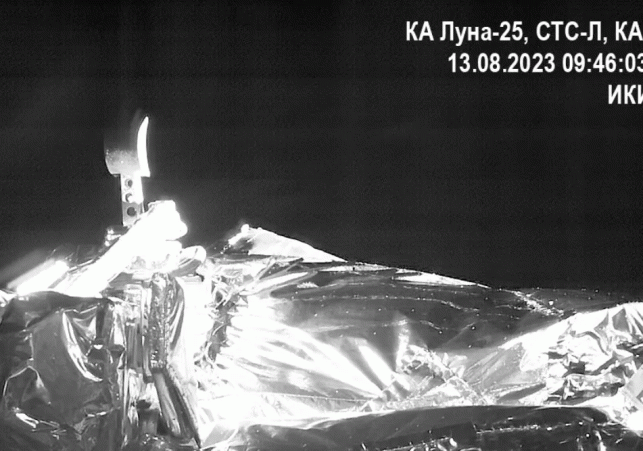
Russia Launches Lunar Lander Luna-25
Russia Launches Lunar Lander Luna-25 After 47 Years
Historic Return to Lunar Exploration
Russia's space endeavors have taken a significant leap with the launch of Luna-25, the nation's first lunar lander in almost five decades. The spacecraft, carried by a Soyuz rocket, took off from the Vostochny Cosmodrome on Friday. In a thrilling update, the Russian space agency Roscosmos has now shared the initial images captured by the spacecraft, offering a glimpse into its celestial journey.
Luna-25's launch marks Russia's resumption of lunar exploration after a hiatus of nearly 47 years. The last lunar mission, Luna-24, was launched in 1976 during the Soviet Union era. This latest endeavor by Russia symbolizes a reinvigorated commitment to exploring the Moon, reflecting advancements in space technology and a renewed global interest in lunar studies.
Roscosmos unveiled the first set of images sent back by Luna-25 on Monday. These captivating snapshots depict the spacecraft's structural components against the backdrop of Earth and the Moon. The imagery holds a special significance, as it captures our separation from Earth and the imminent journey towards the lunar destination. The emblem of the mission and the onboard manipulator can also be observed in one of the images, providing a visual testament to this historic feat.
Also Read: AAP Protests Against Alleged Cost Escalation (arthparkash.com)
Milestones on Luna-25's Journey
The images were taken from a distance of approximately 310,000 kilometers away from Earth, as confirmed by Roscosmos via a Telegram update. Despite launching around a month after India's Chandrayaan-3 mission, Luna-25 has the potential to make an earlier touchdown on the Moon's south pole. The mission is on track to enter a lunar orbit by August 16, and it aims to achieve a gentle landing on the Moon's surface between August 21 and 22. In contrast, Chandrayaan-3 is scheduled for a soft landing on August 23.
Luna-25's journey is distinguished by its more direct trajectory towards the Moon, a strategy informed by its lighter payload and superior fuel storage. Weighing just 1,750 kilograms at liftoff, Luna-25 possesses a more streamlined structure compared to the Chandrayaan-3 mission. This strategic approach facilitates an expeditious lunar approach, positioning Russia's lunar lander on an ambitious timeline.
India's Unique Lunar Approach
In contrast, the Indian Space Research Organisation (ISRO) has adopted a distinct approach with Chandrayaan-3. ISRO compensates for the mission's lower fuel storage by navigating a more circuitous route. Utilizing the gravitational forces of both the Earth and the Moon, Chandrayaan-3 employs a series of intricate maneuvers. These actions propel the spacecraft into higher Earth orbits before gradually transitioning it into a lunar orbit, ultimately leading to its intended lunar landing.
A New Era in Lunar Exploration
Luna-25's historic launch and the captivating images it has shared herald a new era in lunar exploration. With technological advancements enabling more direct trajectories and ingenious navigation strategies, countries like Russia and India are embarking on missions that promise invaluable insights into the Moon's mysteries. These developments underscore humanity's enduring fascination with the cosmos and the quest to unlock the secrets of our celestial neighbor.
Also Read: Massive Tree Removal Sparks Environmental Concerns (arthparkash.com)





